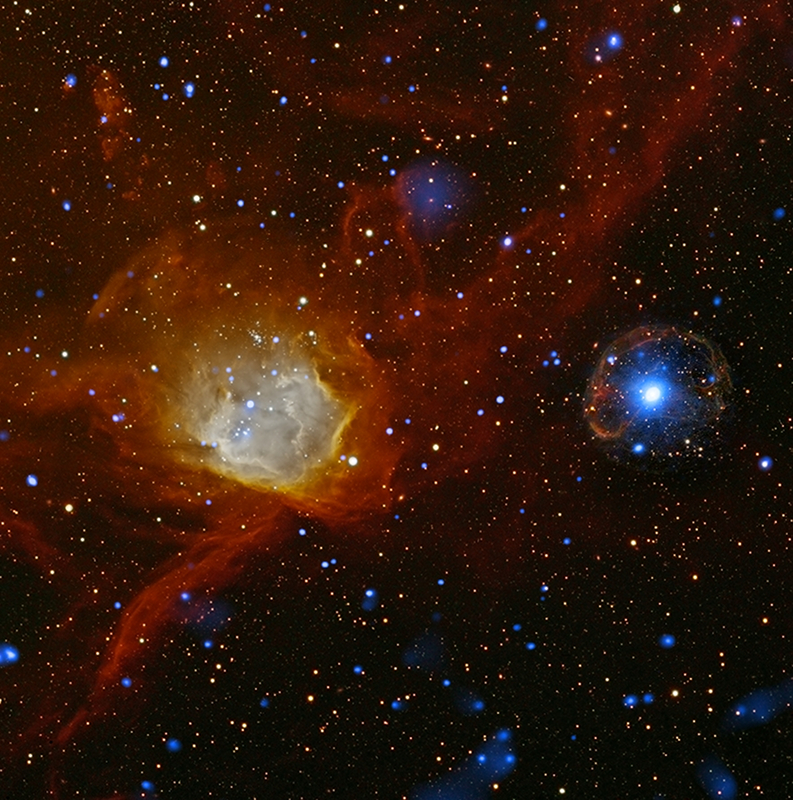
 Credit: X-ray: NASA/CXC/ESA/XMM-Newton/L. Oskinova, W. Sun, M. Guerrero; Optical: AURA/NOAO/CTIO/R.Gruendl/Y.H.Chu
Credit: X-ray: NASA/CXC/ESA/XMM-Newton/L. Oskinova, W. Sun, M. Guerrero; Optical: AURA/NOAO/CTIO/R.Gruendl/Y.H.Chu
Slowly Turning
Neutron stars are born at the explosive death of a star which is more than eight times the mass of the Sun. Many if not most of these tiny, ultradense spheres rotate rapidly at birth, some spinning hundreds of times per second. Others are spun up to even higher spin rates. Neutron stars are also highly magnetized and the interaction of their magnetic fields with surrounding gas can help slow the stars, so that they slow as they age, and the rate at which they slow is a good indicator of how long ago the neutron star was formed. New observations with the Chandra and XMM-Newton X-ray Observatories have found an unusual, young neutron star with an extremely slow spin. This object, known as SXP 1062, is shown as the bright blue X-ray emitting object on the right side of the image above. X-ray pulsations from this object show that it turns once every 17.7 minutes - a short day for earthlings but extremely long by neutron star standards. Deep optical observations show that the neutron star is encircled by a spherical shell of gas which probably represents the remnant of the star that exploded when the SXP 1062 was born. The size of the shell and its brightness suggests that SXP 1062 is only a few tens of thousands of years old, so it's a puzzle to astronomers how such a young neutron star could be rotating so slowly. But SXP 1062 has a companion star in orbit, and perhaps interactions between the companion and the neutron star may have helped to slow SXP 1062's spin. Perhaps these binary star interactions may help explain the slow rotations of other systems as well.
Published: January 2, 2012
<
HEA Dictionary ● Archive
● Search HEAPOW
● Other Languages
● HEAPOW on Facebook
● Download all Images
● Education ● HEAD
>

Each week the HEASARC
brings you new, exciting and beautiful images from X-ray and Gamma ray
astronomy. Check back each week and be sure to check out the HEAPOW archive!
Page Author: Dr. Michael F. Corcoran
Last modified Monday, 26-Feb-2024 17:24:03 EST


